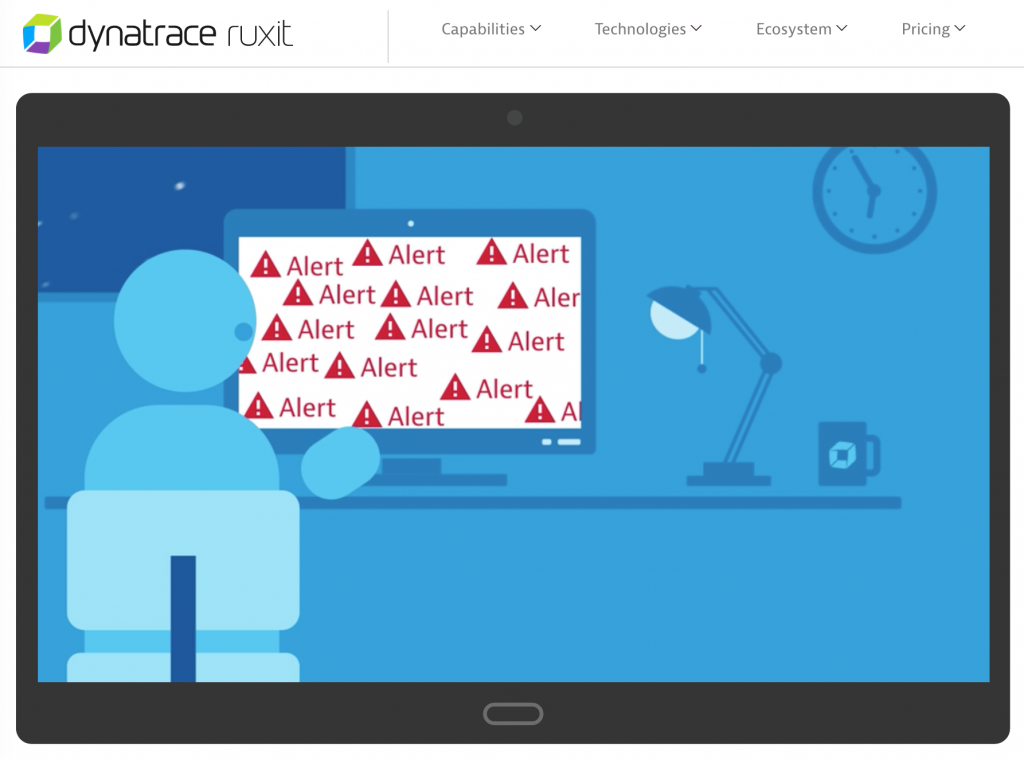How to StartUp inside an Enterprise

I’ve been following Ruxit for quite some time now. In 2014, I first considered them for the Cloud delivery framework we were to create. Later – during another project – I elaborated on a comparison I did between Ruxit and newRelic; I was convinced by their “need to know” approach to monitor large diverse application landscapes.
Recently they added Docker Monitoring into their portfolio and expanded support for highly dynamic infrastructures; here’s a great webinar on that (be sure to watch closely on the live demos – compelling).
But let’s – for once – let aside the technical masterpieces in their development; let’s have a look on their strategic procession:
Dynatrace – the mothership – has been a well-known player in the monitoring field for years. I am working for quite some customers who leverage Dynatrace’s capabilities. I would not hesitate to call them a well-established enterprise. Especially in the field of cloud, well established enterprises tend to leak a certain elasticity in order to get their X-aaS initiatives to really lift-off; examples are manifold: Canopy failed eventually (my 2 cents; some may see that differently), IBM took a long time to differentiate their cloud from the core business, … some others still market their cloud endeavours sideways their core business – not for the better.
And then – last week – I received Ruxit’s eMail announcing “Ruxit grows up… announcing Dynatrace Ruxit!“, officially sent by “Bernd Greifeneder | Founder and CTO”. I was expecting that eMail; in the webinar mentioned before, slides were already branded “Dynatrace Ruxit”, and the question I raised on this, was answered expectedly, that from a successful startup-like endeavour they would now commence their move back into the parent company.
Comprehensible.
Because that is precisely what a disruptive endeavour inside a well-established company should look like: Greifeneder was obviously given the trust and money to ramp-up a totally new kind of business alongside Dynatrace’s core capabilities. I have long lost any doubts, that Ruxit created a new way of technologically and methodically doing things in Monitoring: In a container-based elastic cloud environment, there’s no need anymore to know about each and every entity; the only importance is to keep things alright for endusers – and when this is not the case, let admins quickly find the problem, and nothing else.
What – though – really baffled me was the rigorous way of pushing their technology into the market: I used to run a test account for running a few tests there and then for my projects. Whenever I logged in, something new had been deployed. Releases happened on an amazingly regular basis – DevOps style 100%. There is no way of doing this within established development processes and traditional on-premise release management. One may be able to derive traditional releases from DevOps-like continuous delivery – but not vice versa.
Bottom line: Greifeneder obviously had the possibility, the ability and the right people to do things in a totally different way from the mothership’s processes. I, of course, do not have insight in how things were really setup within Dynatrace – but last week they took their baby back into “mother’s bosom”, and in the cloud business – I’d argue – that does not happen when the baby isn’t ready to live on its own.
Respect!
Enterprise cloud and digitalisation endeavours may get their learnings from Dynatrace Ruxit. Wishing you a sunny future, Dynatrace Monitoring Cloud!




